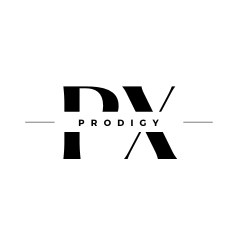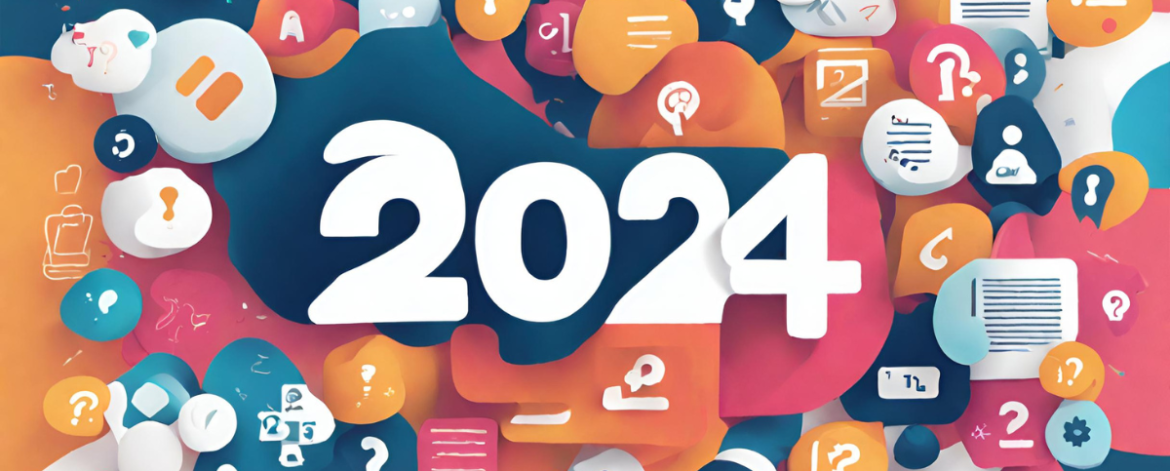- Adobe Photoshop: A Comprehensive Review
- Illustrator vs. CorelDRAW: Choosing the Right Vector Graphics Software
- Canva: Unveiling Its Design Capabilities for Beginners and Professionals
- Affinity Designer: An Alternative to Adobe’s Suite
- Procreate: The Ultimate Digital Illustration Tool for Artists and Designers
- Figma: Collaborative Design Software for UI/UX Designers
- Sketch: Examining its Role in Modern Interface Design
- InDesign for Print and Layout Design
Adobe Photoshop: A Comprehensive Review

Adobe Photoshop stands as a pioneer in the world of graphic design software, offering a vast array of tools, functionalities, and creative possibilities. As the industry standard for image editing and manipulation, Photoshop has continued to evolve, catering to both amateur enthusiasts and professional designers.
Key Features and Functionalities
- Image Editing Powerhouse: Photoshop’s robust suite of editing tools allows users to manipulate and enhance images with precision and creativity.
- Versatile Design Capabilities: From photo retouching and compositing to creating intricate digital artworks, Photoshop serves as a versatile canvas for design exploration.
- Advanced Tools and Filters: The software boasts a plethora of advanced features, including layers, masks, blending modes, and an extensive library of filters and effects.
Strengths of Adobe Photoshop
- Non-Destructive Editing: The ability to work with layers enables non-destructive editing, allowing users to make changes without altering the original image.
- Extensive Customization: Photoshop’s customizable interface and vast selection of brushes, shapes, and tools offer endless possibilities for design experimentation.
- Integration with Adobe Creative Cloud: Seamless integration with other Adobe software and access to Creative Cloud libraries streamline workflows and collaboration.
Applications and Use Cases
- Photography: Widely used by photographers for image editing, color correction, and manipulation to achieve desired visual outcomes.
- Graphic Design: From creating digital artworks to designing web graphics, logos, and illustrations, Photoshop is indispensable in the world of graphic design.
- UI/UX Design: Used by UI/UX designers for creating mockups, wireframes, and prototypes due to its versatile design tools and capabilities.
Limitations and Considerations
- Steep Learning Curve: Due to its extensive feature set, beginners may find Photoshop overwhelming initially, requiring time to master its functionalities.
- Resource Intensive: Running Photoshop smoothly may require substantial system resources, potentially causing performance issues on less powerful computers.
Illustrator vs. CorelDRAW: Choosing the Right Vector Graphics Software
When it comes to vector graphics software, Adobe Illustrator and CorelDRAW stand out as leading contenders, each offering unique features and capabilities tailored for designers, illustrators, and artists. Understanding their strengths and differences is crucial in selecting the ideal tool for your creative projects.
Adobe Illustrator:
- Industry Standard: Illustrator is an industry-standard vector graphics software known for its robust feature set and integration with other Adobe Creative Cloud applications.
- Design Flexibility: It offers precise and versatile tools for creating scalable vector graphics, illustrations, logos, typography, and complex artwork.
- Wide Compatibility: Illustrator’s file format compatibility and seamless integration with other Adobe products simplify workflows and collaborative design processes.
CorelDRAW:
- Versatility and Innovation: CorelDRAW is recognized for its versatility, innovation, and user-friendly interface, catering to both beginners and seasoned professionals.
- Vector and Bitmap Capabilities: Besides vector graphics, CorelDRAW excels in bitmap editing, offering a comprehensive suite for photo editing and manipulation.
- Ease of Use: Its intuitive tools, such as the node editing feature and powerful typography tools, make it user-friendly for various design applications.
Key Differences:
- Workflow and Interface: Illustrator follows a familiar Adobe interface, whereas CorelDRAW offers a more customizable interface and unique workflow.
- Toolsets and Features: Illustrator emphasizes precision and integration with other Adobe apps, while CorelDRAW offers a broader array of features, including bitmap editing.
- Pricing and Accessibility: Adobe Illustrator is available through Adobe’s subscription model, while CorelDRAW offers perpetual licensing, making it a more cost-effective option for some users.
Choosing the Right Tool:
- For Adobe Ecosystem Users: Illustrator seamlessly integrates with other Adobe products, making it a suitable choice for those already invested in the Adobe ecosystem.
- Versatility and Workflow Preferences: CorelDRAW’s intuitive interface and versatility in both vector and bitmap editing make it an attractive choice for users seeking flexibility.
- Budget Considerations: CorelDRAW’s one-time purchase option might be more budget-friendly for users looking to avoid subscription-based models.
Canva: Unveiling Its Design Capabilities for Beginners and Professionals

Canva has emerged as a user-friendly and versatile graphic design platform, democratizing design by offering intuitive tools and templates for users with varying skill levels. Whether you’re a beginner or a seasoned professional, Canva provides an accessible platform for creating stunning visuals for various purposes.
User-Friendly Interface and Accessibility
- Intuitive Design Tools: Canva’s drag-and-drop interface simplifies the design process, enabling users to create professional-looking graphics without prior design experience.
- Templates for Every Occasion: With a vast library of templates for social media posts, presentations, posters, and more, Canva streamlines the design process for different purposes.
Features and Functionalities
- Customizable Design Elements: Canva offers a range of fonts, graphics, illustrations, and stock photos that users can easily customize to suit their design needs.
- Collaborative Design: The platform allows collaborative design projects, enabling teams to work together in real-time, share designs, and provide feedback.
Beginner-Friendly Design for Everyone
- Ease of Use: Canva’s simplicity makes it ideal for beginners, offering a low learning curve and an extensive library of tutorials for guidance.
- Accessible Tools: Users can create social media graphics, marketing materials, presentations, and more with ease due to Canva’s pre-designed elements and templates.
Advanced Features for Professionals
- Customization Options: Canva Pro offers advanced features such as resizable designs, transparent backgrounds, and access to a larger library of assets for professional-grade designs.
- Brand Kit and Team Collaboration: Professionals can leverage the Brand Kit for consistent branding and collaborate with team members, making Canva suitable for business needs.
Limitations and Considerations
- Limitation in Advanced Functionality: While Canva offers various design tools, it may have limitations for users requiring highly specialized or intricate design capabilities.
- Subscription Model: Canva’s advanced features are available through subscription plans, which might be a consideration for users seeking specific functionalities without recurring costs.
Affinity Designer: An Alternative to Adobe’s Suite
Affinity Designer has gained recognition as a powerful vector graphic design software, positioning itself as a compelling alternative to Adobe’s suite of design applications. With its comprehensive feature set, intuitive interface, and affordability, Affinity Designer appeals to designers, illustrators, and artists seeking professional-grade design capabilities.
Key Features and Strengths
- Comprehensive Vector Tools: Affinity Designer offers a wide range of precise vector tools for creating intricate designs, illustrations, and graphics.
- Pixel and Vector Workflows: Seamlessly switch between pixel and vector workflows, allowing users to combine raster and vector elements in a single project.
- Affordable Pricing Model: Affinity Designer provides a one-time purchase option, making it a cost-effective choice compared to Adobe’s subscription-based model.
Versatility and Capabilities
- Multi-platform Support: Available for macOS, Windows, and iPad, Affinity Designer ensures cross-platform compatibility and accessibility.
- Professional-Grade Features: It boasts professional-grade features such as unlimited artboards, advanced typography, live effects, and a robust export persona for multiple file formats.
Workflow and Interface
- Intuitive User Interface: Affinity Designer’s user-friendly interface, coupled with customizable workspaces, enhances the user experience and workflow efficiency.
- Seamless Integration: While not part of a suite like Adobe, Affinity Designer integrates well with other Affinity software, offering a cohesive design ecosystem.
Considerations and Limitations
- Learning Curve: While user-friendly, transitioning from other software might require some adjustment due to differences in workflow and tool placement.
- Compatibility with Industry Standards: Affinity Designer’s popularity is growing, but Adobe’s software remains an industry standard, which might affect compatibility in collaborative workflows.
Procreate: The Ultimate Digital Illustration Tool for Artists and Designers
Procreate has revolutionized digital illustration, becoming a go-to choice for artists, illustrators, and designers seeking a versatile and powerful tool for creating stunning artworks on the iPad. With its intuitive interface, expansive feature set, and seamless performance, Procreate has garnered acclaim as a leading digital illustration software.
Intuitive Interface and User Experience
- Natural Drawing Experience: Procreate’s interface mimics traditional drawing tools, offering a natural and intuitive experience, especially when using Apple Pencil.
- Streamlined Workflows: Its user-friendly interface and customizable brushes streamline workflows, enabling artists to focus on their creative process effortlessly.
Powerful Illustration Tools
- Extensive Brush Library: Procreate boasts a vast library of brushes, including customizable and downloadable options, catering to a wide range of artistic styles and techniques.
- Layer Management and Blend Modes: Advanced layer management and blend modes empower artists to experiment with various effects and techniques, enhancing the depth and complexity of their artwork.
Artistry and Creativity
- Animation Capabilities: Procreate’s animation features allow artists to create simple animations and GIFs directly within the app, fostering creativity and storytelling.
- Time-Lapse Recording: The app’s time-lapse recording feature captures the artistic process, providing insight into the creation of artworks for social sharing or tutorials.
Integration and Export
- Integration with Third-Party Apps: Procreate allows seamless integration with other apps and cloud services, facilitating easy export and sharing of artworks.
- High-Quality Outputs: Artists can export their artworks in various formats with high resolution, suitable for print or digital sharing across multiple platforms.
Considerations and Limitations
- iOS and iPad Exclusivity: Procreate is exclusively available for iPadOS, limiting accessibility for users who prefer other operating systems.
- Steep Learning Curve: While intuitive, mastering Procreate’s advanced features may require time and practice, especially for beginners in digital art.
Figma: Collaborative Design Software for UI/UX Designers

Figma has revolutionized the realm of UI/UX design by offering a cloud-based, collaborative platform that facilitates seamless teamwork, streamlined workflows, and efficient design processes. As a versatile design tool, Figma stands out for its real-time collaboration, user-friendly interface, and comprehensive set of features tailored for designers working on digital interfaces.
Real-time Collaboration
- Simultaneous Editing: Figma allows multiple designers to work on a project simultaneously, enabling real-time updates and interactions, fostering efficient collaboration.
- Live Previews and Comments: Instantaneous live previews and commenting features enable team members and stakeholders to provide feedback and iterate designs in real-time.
User Interface Design Capabilities
- Vector Design Tools: Figma provides robust vector design capabilities, enabling the creation of intricate user interfaces, icons, and illustrations.
- Interactive Prototyping: Its prototyping features allow designers to create interactive prototypes, showcasing user flows and interactions within the design.
Accessibility and Integration
- Cross-platform Accessibility: Figma is accessible across various operating systems (macOS, Windows, Linux) and devices, ensuring flexibility and accessibility for designers.
- Integration and Plugins: Seamless integration with other tools and a wide range of plugins enhance Figma’s capabilities, offering extended functionalities and workflow enhancements.
Workflow Enhancements
- Version History and File Management: Figma maintains a comprehensive version history, allowing designers to track changes, revert to previous versions, and manage design iterations efficiently.
- Design System and Component Libraries: Designers can create and maintain design systems and reusable component libraries, ensuring consistency and scalability across projects.
Considerations and Limitations
- Learning Curve: While user-friendly, mastering Figma’s functionalities and collaborative features might require some initial learning for new users.
- Offline Functionality: As a cloud-based tool, Figma’s dependency on an internet connection might hinder functionalities in offline environments.
Sketch: Examining its Role in Modern Interface Design
Sketch has solidified its position as a prominent design tool, particularly in the realm of interface design for digital platforms. With a focus on simplicity, versatility, and a rich set of features, Sketch has become a go-to choice for designers crafting modern and user-centric interfaces.
Vector-Based Design Focus
- Precision and Flexibility: Sketch’s vector-based approach offers precision in designing user interfaces, icons, and illustrations while ensuring scalability across devices.
- Artboard and Symbols: Its artboard-based approach and reusable symbols streamline the creation of responsive and consistent design elements.
UI/UX Design Capabilities
- Prototyping and Interaction: While primarily a design tool, Sketch integrates with prototyping tools, allowing designers to create interactive prototypes for user testing and validation.
- Typography and Styling: Robust typography tools, advanced styling options, and the ability to create nested styles enhance the efficiency of designing complex interfaces.
Workflow and Collaboration
- Third-Party Integrations: Sketch’s integration with various plugins and third-party tools expands its functionality, offering designers extended capabilities and workflow enhancements.
- Collaboration and Handoff: While historically lacking real-time collaboration, Sketch has integrated plugins and features to facilitate collaboration and developer handoff.
Adoption in Industry
- Industry Standard: Sketch has gained popularity as an industry-standard tool for UI/UX design, with a significant presence in design agencies and tech companies.
- Community and Resources: Its active community and extensive resources, including plugins, templates, and tutorials, support designers in maximizing Sketch’s potential.
Considerations and Limitations
- Mac-Exclusive: Being available only for macOS limits its accessibility for designers who prefer or operate on different operating systems.
- Real-time Collaboration: Historically lacking robust real-time collaboration features, Sketch users often resort to additional tools or plugins to facilitate team collaboration.
InDesign for Print and Layout Design
Adobe InDesign stands as the industry standard for print and layout design, offering a comprehensive suite of tools and functionalities tailored for creating visually stunning and print-ready materials. It serves as a powerhouse for designers, publishers, and marketers in producing everything from brochures and magazines to books and marketing collateral.
Precise Layout Design Tools
- Grid-Based Design: InDesign’s grid system enables designers to create layouts with precision, ensuring alignment and consistency in printed materials.
- Typography and Text Handling: Advanced typography tools allow for creative text manipulation, precise kerning, leading adjustments, and the incorporation of stylesheets.
Print-Ready Outputs
- High-Quality Outputs: InDesign supports high-resolution images, ensuring print-ready outputs with superior quality and sharpness for various print media.
- Preflight and Export Options: Its preflight tools and export options help designers identify and resolve potential printing issues, ensuring error-free final outputs.
Versatility in Design
- Multiple Page Sizes and Formats: InDesign enables designers to work with multiple page sizes and formats within a single document, accommodating diverse print materials.
- Interactive and Digital Publishing: While primarily for print, InDesign offers features for creating interactive PDFs and digital publishing, bridging the gap between print and digital media.
Integration with Other Adobe Tools
- Seamless Adobe Integration: InDesign integrates smoothly with other Adobe Creative Cloud applications like Photoshop and Illustrator, enabling efficient workflows.
- Links and Asset Management: InDesign’s links panel allows for easy management of linked assets, ensuring updates are reflected across the design.
Considerations and Limitations
- Learning Curve: Mastering InDesign requires familiarity with its extensive toolset and may pose a learning curve for new users.
- Resource Intensive: Working with large files and complex layouts may demand significant system resources, affecting performance on less powerful computers.





